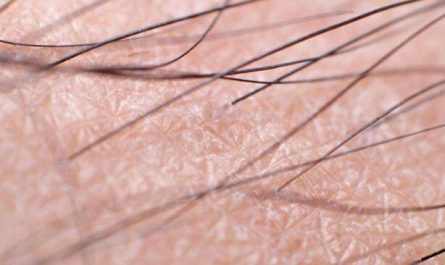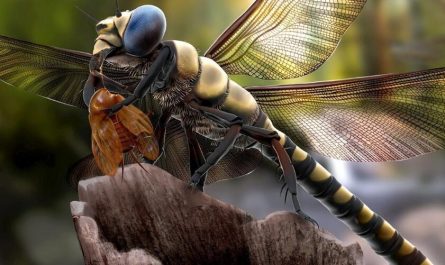Sweet is a pleasant taste that makes people feel happy. Its biological essence is that sweet molecules interact with sweet receptors, and after a complex transmission process, they activate the reward area of the brain to release the neurotransmitter dopamine. From the perspective of chemical structure, sweet molecules can be divided into: sugars (sugars, sugar derivatives, sugar alcohols, glycosides), amino acids (dipeptides, proteins), sulfonamides, etc. The sweetness value is closely related to the molecular structure Related. This article describes various sweet molecules and their sweetness from the molecular structure level, and see which substance is the sweetest?
Sour, sweet, bitter, salty, and fresh are the five basic tastes of human beings. People’s preference for sweetness is innate [1], “Shuowen Jiezi·Ganbu”: “Non, beautiful. Tongue, knowing sweetness. “The tongue can taste sweetness. The biological mechanism of sweetness is roughly as follows: Sweet molecules activate sweet receptors (T1R2/T1R3 receptors) on tongue epithelial taste buds, which in turn activate G protein and phospholipase. Cβ2, the inositol triphosphate obtained by the hydrolysis of Cβ2 induces the release of intracellular Ca2+, and then the cell membrane depolarizes and releases neurotransmitters, thereby producing sweetness.
At the chemical level, scientists have summarized and continuously revised and supplemented relevant molecular structure-activity theories:
(1) In 1963, Shallenberger proposed the AH-B theory, that is, the sweet molecule should have both hydrogen donor group AH (such as hydroxyl, amino, etc.) and hydrogen acceptor group B (such as oxygen atom, nitrogen atom, etc.), and the AH group The distance between H (hydrogen proton) and B is 0.25~0.40nm. The AH-B unit of the sweet molecule interacts with the AH-B unit of the sweet receptor to produce a sense of taste.
(2) In 1972, Kier supplemented the AH-B theory and proposed the AH-BX triangle theory. The three points of hydrophobic groups X, AH, B and X jointly determine the sweetness of the molecule [4] (Figure 1 (b) )), the distances between X and A and B are 0.35nm and 0.55nm respectively, but the later research findings do not have universal significance.
(3) In 1991, Tinti further proposed the multi-point theory, that is, the sweet taste receptor has at least 8 recognition points that interact with the corresponding parts of the sweet molecule to produce sweetness. For example, aspartame and the receptor have 9 sites that bind to each other. effect.
It can be seen that the sweetness is related to the lipid-water partition coefficient of the molecule. When the molecule reaches a lipophilic and hydrophilic balance, it has a large effect on the sweet receptor and has a high sweetness [7]. It is worth pointing out that the three-dimensional structure of individual sweet receptors and molecule-receptor conjugates has not yet been obtained, so the above-mentioned theory is not fully empirical and has certain limitations [8].
So far, there are more than 20 kinds of sweet molecules commonly used, such as sugars (sucrose), sugar derivatives (sucralose), sugar alcohols (sorbitol), glycosides (steviol glycosides), dipeptides ( Aspartame), proteins (thomasame), sulfonamides (saccharin), etc. Usually the sweetness of a 5% sucrose solution at room temperature is set as 1, and other sweet molecules are compared with it to obtain the sweetness value. The measurement generally depends on the evaluator to taste the average value for many times, so the sweetness value is affected by subjective factors. Recently, an electronic tongue has been developed to simulate human taste, which can evaluate the sweetness objectively, but the technology is not yet mature [9].
Sugar brings happiness to people, but excessive intake can lead to obesity and even diseases (such as diabetes, etc.). The mechanism is due to the decomposition of excess sugar molecules in the body to produce “rich” energy. It is estimated that 2.16 billion people will be affected by obesity in 2030[10]. The low-calorie life concept has ushered in an opportunity for the development of non-sugar sweeteners and also promoted the diversified development of sweet chemistry.
Sugars, sugar alcohols, glycosides
1.1 Sugars and their derivatives
It is generally believed that sweetness comes from sugars (also called carbohydrates). Sucrose is the most common one. The chemical structure is attributed to two adjacent hydroxyl groups that are close in space. It satisfies the AH-B theory. One hydroxyl group is used as AH, and the other hydroxyl group is The oxygen atom is referred to as B (Figure 2 top). The fructose and glucose produced after sucrose hydrolysis also conform to the AH-B theory, and the sweetness is 1.1~1.8 and 0.5~0.8 respectively. There is theoretical support for the sweetness of another kind of natural sugar, maltose, which is used daily. After its decomposition, it produces 2 molecules of glucose, which is derived from the hydrolysis of starch (non-sweet polysaccharide). This is why starch produces sweetness after chewing. the reason.
Excessive intake of sugar can cause pancreatic islet dysfunction and cause diabetes, obesity and other diseases. Therefore, scientists continue to develop alternatives to traditional sugar to satisfy people’s desire for sweetness without causing significant changes in blood sugar and insulin. Some natural rare Sugar has these properties. Wiggers discovered trehalose in Claviceps ryegrass in 1832, and Levin first adopted a biological method in 1988 to enzymatically convert galactose to obtain tagatose, as well as allose produced by fructase-catalyzed conversion.
The sweetness of natural sugar is generally concentrated around 1.0, which is difficult to satisfy a wider range of applications. In 1976, Hough [13] et al. found that the selective substitution of partial hydroxyl groups of sucrose molecules by halogens can greatly affect the sweetness of the molecules. Chlorination at position 2 even has a bitter taste, while 4,1′,6′-sucralose and 4, 6 ,1′,4′-tetrabromosucrose has a greatly enhanced sweetness, and the sweetness can reach 400~800 and 7500 respectively. The reason is: the introduction of halogen can enhance the lipophilicity of sucrose molecules, and has a stronger interaction with sweet receptors; bromine products have a higher sweetness than chlorinated products because the atomic radius of bromine is equivalent to the molecular size on the sweet receptor , Combine more fully. Refinement studies have shown that halogenation of the four positions 1, 4, 1′, and 4’in the sucrose molecule can increase the sweetness.
Sucralose is currently a widely used sweet molecule, almost all of it is excreted after consumption. It can be stored for 4 years under dry conditions at 20°C, but it will decompose to form levoglucone and 5-hydroxymethylfurfural during the baking process. At the same time, the released hydrogen chloride will participate in the chlorination of glycerol to produce the toxic substance chloropropanol, so sucralose food cannot be heated at high temperature. Hough adopts the full group protection method, including acylation, chlorination, deacylation and other steps. Although the yield is only 14.6%, it provides a theoretical basis for the synthesis of sucralose. With the increase in people’s demand for sucralose In addition to the continuous improvement of the synthetic route, the single-group protection method has become a commonly used synthetic method due to fewer steps and higher yield. After acylation, chlorination and deacylation, the yield can reach 27.8%.
1.2 Sugar alcohols
People have developed another series of commonly used sweet molecules-sugar alcohols, the molecular structure is polyols (containing multiple hydroxyl functional groups), such as sorbitol, mannitol, xylitol, etc. (Figure 5). Like carbohydrate molecules, it has strong hydrophilicity and has little effect on sweet taste receptors, so the sweetness is not high. Sugar alcohols can be obtained from natural plants, and can also be obtained by reduction of corresponding sugars. For example, sorbitol can be obtained by reduction of glucose, mannitol can be obtained by reduction of mannose, and xylitol can be obtained by reduction of xylose. Although the sweetness of sugar alcohol is not as sweet as sugar, sugar alcohol will not produce acid under the action of oral bacteria to corrode teeth, which can prevent tooth decay; human blood sugar does not rise significantly after eating [18], and it can be eaten by diabetic patients, but excessive consumption will cause Cause diarrhea.
1.3 Glycosides
Carbohydrate sweetness molecules also include glycosides, whose molecular structure is glycosidic bonds to connect sugar residues (the hemiacetal hydroxyl groups of monosaccharides or oligosaccharides) and glycosides (non-sugar moieties such as hydroxyl groups). Such as steviol glycosides, neohesperidin dihydrochalcone, mogroside, etc., are natural and safe, high in sweetness, low in calories, and can prevent dental caries [19].
Stevioside (Stevioside) is a tetracyclic diterpene glycoside molecule, which can be extracted from stevia leaves, and its sweetness can reach 270~300. Steviol (glycosyl) with different numbers of glucosyl groups (-glu) at position C-19 and different numbers and types of sugar groups at position C-13 will result in different sweetness values:
(1) Stevioside A (sweetness 350~450) with 3 glucosyl groups connected by the oxoside bond at position C-13 has higher sweetness than stevioside with 2 glucosyl groups;
(2) If one of the three glucose groups connected by C-13 is replaced with a rhamnosyl (-rhm) stevioside C (sweetness 40-60), the sweetness will be greatly reduced;
(3) If C-19 is connected with 2 glucosyl stevioside E (sweetness 100~150), the sweetness will decrease slightly.
The stevioside series are acid and alkali resistant and are widely used in beverages. They have gradually replaced saccharin.
Neohesperidin [21], extracted from lime peel. Naringin and neohesperidin with a bitter taste are opened by alkali and then hydrogenated under palladium catalysis to obtain naringin dihydrochalcone and neohesperidin dihydrochalcone. The production cost is relatively high, and it is often used in beverages. The relationship between dihydrochalcone molecular structure and sweetness value:
(1) The R group connected to C-7 in dihydrochalcone is a glycosyl group (new hesperidin, which is abbreviated as Neo or glucosyl, etc.), and there is at least one hydroxyl group on the benzene ring connected to C-2 , The molecule meets these two conditions at the same time to have sweetness;
(2) If C-4′ on the right side of the benzene ring is connected to an alkoxy group, the sweetness will be enhanced, that is, the sweetness of neohesperidin dihydrochalcone (sweetness is 1000) than that of naringin dihydro Chalcone (500~700 sweetness) is much higher.
Mogroside V is a triterpene glucoside molecule, which can be extracted from Luo Han Guo, a vine plant in the Cucurbitaceae family, with a sweetness of 300. Similar to stevioside, different numbers and types of sugar groups will be connected to get different sweetness values, while the hydroxyl group at the C-11 position will be destroyed, which will give a bitter taste. It has been cultivated and used for 800 years in medicines commonly used in the treatment of dry cough and sore throat in China, but commercial production was not realized until 2004.
Dipeptides, proteins
Amino acids are the basic units that constitute proteins. Almost all natural amino acids that constitute proteins are L-type, most of which have a bitter taste, while D-type amino acids present a sweet taste [26, 27]. The AH-B-X triangle theory points out that the three parts of AH-B-X in the sweet molecule and the three binding groups of the sweet receptor will interact in a clockwise direction to produce sweetness. The AH-B-X in the D-type amino acids are arranged in a clockwise direction while the L-type amino acids are arranged in a counterclockwise direction, which will produce two diametrically opposite tastes, sweet and bitter.
2.1 Dipeptides
Dipeptide sweetness molecules refer to compounds with a peptide bond between molecules formed by two molecules of amino acids through dehydration and condensation, such as aspartame and neotame. In 1965, James M. Schlatter accidentally obtained the sweet molecule aspartame, the scientific name aspartame. Aspartame has a sweet taste, which is mainly based on the hydrophobic interaction between the benzene ring on the molecule and the hydrophobic region of the sweet receptor. Nefro and Tinti believe that there may be two hydrophobic regions on the sweet receptor with a distance of about 1 nm [28]. Based on this theoretical basis, an alkyl group was attached to the aspartame molecule to obtain a second hydrophobic region, and a new substance neotame was synthesized. The sweetness of aspartame is 120~200, while the sweetness of neotame is as high as 7000~13000 (Figure 7(b)). When the main carbon number of the introduced alkyl group is three or four, and the more branches on the terminal carbon atoms, the higher the hydrophobicity and the higher the sweetness [29]. In 2008, the new “sugar-free” Coke launched by the Coca-Cola Company used aspartame, which has high sweetness, no calories, and anti-caries[30], and the price of aspartame with the same sweetness is only sucrose. 70%, so it has a certain degree of competitiveness in the sweet market.
2.2 Protein
Plant sweet protein refers to a protein macromolecule with sweet taste extracted from natural plants. In 1972, VanderWel et al. extracted a sweetness component from the fruit-somatin [31]. Only the sweet receptors of humans and monkeys can interact with it to feel its sweetness. Since then, the sweet protein Enter the human field of vision. Subsequently, scientists separated and purified a variety of plant sweet proteins with various sweetness levels (100~10000, Table 1), all with the following characteristics: (1) No characteristic sequence [32]; (2) With the negative charge on the surface of the protein Decrease and increase sweetness [33]; (3) Intramolecular hydrogen bonds and hydrophobic groups have an influence on sweetness; (4) There may be multiple binding interactions between sweet proteins and sweet receptors; (5) In Degraded into amino acids in the human body, absorption and utilization do not depend on insulin.
Plant sweet protein has the characteristics of high sweetness, low calories, and can prevent dental caries[34]. It can be used in the production of food, beverages, and medicines[35]. However, the protein is easy to denature at high temperatures, so foods containing sweet protein cannot be heated at high temperatures. use. Because the fruit resources containing these sweet proteins are not abundant, and the cost of fruit transportation and extraction, large-scale production is still difficult at present.
Sulfonamides
Sulfonamide sweet molecules refer to a class of molecules containing sulfonamide functional groups, such as saccharin, cyclamate, and acesulfame K, all of which are obtained by accident by chemists. The molecule satisfies the AH-B sweetness theory (Figure 8). The sweetness of sulfonamide sweetness molecules is related to the molecular volume and the volume of the substituents [36]. They affect the distance between the “sweet triangles” and thus the sweetness.
Figure 8 Molecular structure of sulfonamide sweetness
In 1879, Fahlberg, a Russian chemist, accidentally obtained a high-sweetness molecular saccharin, scientific name phthalyl sulfonimide, with a sweetness of 300 to 500. Fahlberg uses the toluene method to synthesize [37], and the common method in my country is the self-developed phthalic anhydride method, which uses phthalic anhydride, ammonia, liquid chlorine, sulfuric acid, sodium nitrite, copper sulfate, sulfur dioxide, etc., after amidation, Hoffman degradation, In the process of diazotization, sulfonyl chlorination, and cyclization, the total yield can reach more than 80% [38] (Figure 9(a)).
Almost all saccharin is metabolized out of the body 24 hours after entering the human body, and has no effect on the body; however, it has also been reported that feeding high-concentration saccharin caused cancer in mice, so it was banned in the United States in 1912. However, due to the shortage of sugar during the World War, saccharin was reused. The World Health Organization Joint Committee (WHO) stipulated in 1977: The allowable daily intake (ADI) of saccharin is 0~2.5mg/kg. Our country uses sodium saccharin, which has a low production cost and an annual consumption of nearly 10,000 tons. However, due to the gradual rise of natural sweet molecules in recent years, the scale of saccharin production has shrunk.
In 1937, Michael Sve-da, a student of the University of Illinois in the United States, accidentally obtained sodium cyclamate, the scientific name is sodium cyclamate, with a sweetness of 30-60. The synthesis generally uses cyclohexylamine to react with sulfamic acid at 165℃ to produce cyclohexyl sulfamic acid. After the temperature drops below 130℃, use 10% Na2CO3 solution to dissolve the product, and the yield after recrystallization can reach 97.5% [ 39] (Figure 9(b)). However, it will slowly hydrolyze in the solution to produce inorganic sulfate and toxic cyclohexylamine. Under normal circumstances, after human consumption, 40% is excreted in urine and 60% is excreted in feces. There is no accumulation in the body. Therefore, it is approved for use in more than 40 countries (but prohibited in the United States), and its safety is still inconclusive [ 40]. The WHO stipulated in 1982 that the allowable daily intake of sodium cyclamate is 0~11mg/kg.
In 1967, German scientist K. Clauss accidentally got Acesulfame K at work, scientific name is acesulfame potassium, sweetness is 130~200. The synthesis method (Figure 9(c)) usually adopts the strategy of sulfamic acid, diketene, triethylamine, and sulfur trioxide as raw materials. The reaction conditions are mild and the purity and yield (81.6%) are both high 37. After eating, 100% of the original substance is excreted from the urine, usually without decomposition, and no chemical reaction with food. The allowable daily intake is 0-15mg/kg. Mixing acesulfame potassium and aspartame is common in the food and beverage industry, which can reduce the amount of sweetener used and improve the sweet taste.
in conclusion
Sweet chemistry is common in our daily life, and the sugar compounds are the main energy source for human beings. The development of molecular structure sweetness theory not only helps people define and distinguish sweet compounds, but also provides theoretical guidance for scientists to develop new sweeteners. The definition and quantification of sweetness need to be more scientific, digitized, and systematic. The research on the structure-activity relationship of related molecules needs more extensive experimental accumulation, which also provides a solid theoretical basis for the development of artificial intelligence sweet chemistry. Sweet molecules that have greater application value to avoid causing diseases point the way. With the increasing improvement of people’s living standards and the overall development of related fine chemistry, sweet chemistry will usher in a more comprehensive scientific and industrial leap.






